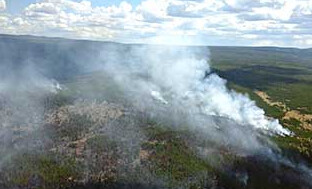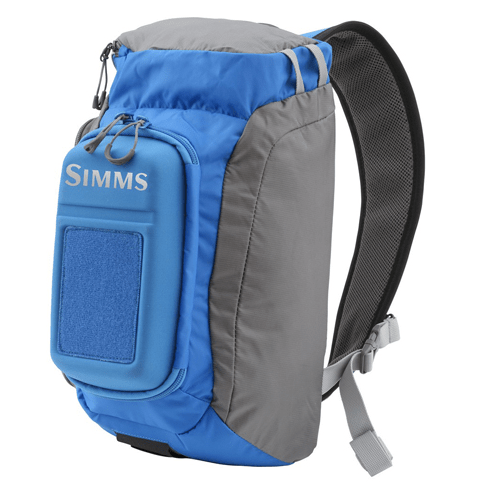The artwork of second-graders from Morning Star Elementary School in Bozeman was launched into space this week for a six-month stay on the International Space Station as part of a larger Montana State University research project into developing more durable computers for NASA.
Stickers bearing a mission patch logo created by students in Cheri Jakovac’s class were aboard the SpaceX Falcon 9 resupply rocket that was launched Sunday night and broadcasted live on NASA TV. The stickers will remain on the ISS until December when they will be loaded onto a return capsule to be given back to the students.
The logo art activity was an outreach component of an ongoing research project at MSU to develop a new radiation-tolerant computer technology. MSU has been researching this technology for nearly a decade under the direction of Brock LaMeres, associate professor in the Department of Electrical and Computer Engineering in the College of Engineering and principal investigator of the project.

“Future NASA missions will require faster computers, but the radiation environment of space causes earthbound computers to fail,” LaMeres said. “MSU has been researching how to make computers that not only meet the computing needs of future missions, but that will be reliable in the harsh environment of outer space.”
MSU’s computer has been tested in radiation chambers, on high altitude balloons, and on rockets that reach the beginning of outer space. The current project to put the computer on the ISS will be its most rigorous test yet and will set the stage for the next level of development, LaMeres said.
“Our next milestone is to operate the computer in a real space environment for an extended amount of time,” he said. “The ISS is the perfect platform for the next stage of our development.”
The MSU computer will be flown to the space station this fall. There, astronauts will install it in an experiment locker owned by NanoRacks, a Texas-based company that facilitates access to the space station.
NanoRacks contacted LaMeres in January about flying a small amount of memorabilia related to his current ISS project. NASA provides scientists who are working on ISS research an opportunity to fly memorabilia to the station and be returned as keepsakes for the research team. LaMeres contacted Jakovac, his daughter Kylie’s teacher, about having her class design a logo for the project as a way to show them how the math and science they are learning is used in real world applications.
“Exposing students at an early age to the exciting things that people working in STEM (science, technology, engineering, and math) get to do is very important,” LaMeres said. “Hopefully having them hear about the research we are doing at MSU will leave a lasting impression that might lead to them choosing degrees, and ultimately careers, in STEM.”
Working with LaMeres on the project are Connor Julien, an electrical engineering graduate student, Daniel Mills, a senior in electrical engineering and Brandon Klise, a sophomore in computer engineering. They, with LaMeres, visited the class in February and explained the current mission. The students were shown examples of mission logos and asked to draw their own version that represented MSU’s work. The research team used the common themes in the students’ drawings to create the final mission logo, which depicts the process of going to and returning from the ISS through illustrations of a rocket being launched, the ISS, and the return capsule bearing Montana’s 406 area code floating down via parachute.
Also on the logo is the acronym RTcMISS, pronounced “Artemis,” which stands for “Radiation Tolerant computer Mission on the International Space Station.” “NanoRacks” also appears on the logo along with acronyms designating the Montana Space Grant Consortium, MSU’s College of Engineering, NASA EPSCoR and the MSU Space Science and Engineering Laboratory.
Student designers from Jakovac’s class are: Connor Baller, Jaden Bateson, Cooper Bourret, Grace Brandon, Claire Brown, Oliver Carey, Myles Faerber, Geno Graf, Ibrahim Al-Kaisy, Inga Lee-Eichenwald, Kylie LaMeres, Cameron Mansfield, Olivia Morgner, Reese Navarro, Helen Nelson, Katelyn Pahut, Daniel Peace, Bobby Pratt, Heidi Rich, Owen Riendeau and Quinn Werner.
A video of the logo design process can be viewed at https://www.youtube.com/watch?v=qx9_n9znXhA. A full recording of the launch can be viewed on the SpaceX website at http://www.spacex.com/webcast.


 Nominations can be submitted online at
Nominations can be submitted online at 





News Comments
Thank you
Open Auditions for Annie
Monday, Sep. 16, 2024
I’m at the Bozeman airport where your painting, “Blowing East” is displayed. It’s absolutely gorgeous! Bravo, Marci!!
The Artists’ Gallery in Bozeman’s Emerson Cultural Center May Exhibits
Sunday, Jun. 30, 2024
This is so typical of a sign in, which we should not have to do to check if we or some one in our party got a permit. I have been working or "creating an account" for 30 minutes and just get the same ...
Smith River permit drawing results available
Sunday, Mar. 10, 2024
I have struggled with this podcast and my own participation therein, the event itself obviously traumatic, but beyond that my inability to reach anyone and convey anything resembling truth. The person ...
Billings, MT Case Becomes True Crime Podcast | 'An Absurd Result'
Marktokarski
Saturday, Jan. 20, 2024